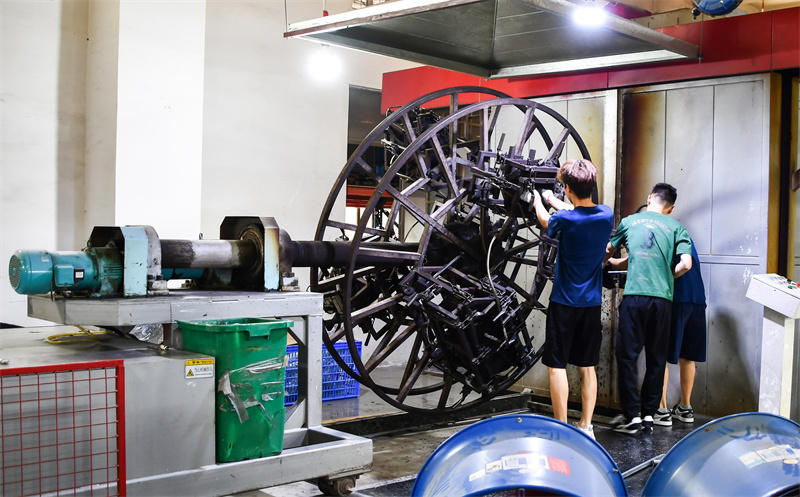How to Prevent the Rotomolded Products from Deformation in Rotational Molding Process
 Aug 20,2024
Aug 20,2024

How to Prevent the Rotomolded Products from Deformation in Rotational Molding Process
Preventing deformation in rotomolded products during the rotational molding process is indeed a critical aspect that demands meticulous attention to several key factors. Here’s more detailed insights on effective ways to prevent deformation:
1. Material Selection
The choice of material plays a pivotal role in the final product’s integrity. It’s essential to select a material with the appropriate properties for the intended application. Factors such as thermal stability, flexibility, and melt viscosity must be considered. Using a material with a higher melt strength can help in maintaining the product’s shape during cooling. For instance, some rotationally molded products require precise dimensions for assembly, and it is advisable to choose a material with lower shrinkage. Additionally, it is crucial to ensure that the resin used is of consistent quality and free from moisture, as moisture can cause irregularities in the melting process and increase the risk of deformation.
2 Mold Design
The design of the mold significantly contributes to the prevention of deformation. Ensuring that the mold has uniform wall thickness throughout is crucial for consistent heating and cooling. Inconsistent wall thickness can result in varying cooling rates across different parts of the product, leading to internal stresses and subsequent deformation. To enhance strength and stability, especially in areas prone to stress, it is advisable to integrate reinforcements or ribs into the design. This measure reduces the likelihood of deformation under load or due to thermal expansion. Furthermore, incorporating suitable draft angles in the design facilitates the smooth ejection of the product from the mold, thereby minimizing the risk of damage. Lastly, proper venting in the mold is essential as it allows the escape of gases produced during the molding process, thereby reducing internal pressure and the associated risk of deformation.
3. Process Parameters
The rotational molding process is characterized by heating the material until it is melted and uniformly adheres to the inner surface of the mold. It is crucial to manage the heating and cooling cycles with precision. Overheating may cause material degradation, whereas inadequate heating can lead to incomplete fusion. Additionally, the cooling rate must be carefully controlled to avoid thermal stresses and the potential for deformation.
4. Equipment Maintenance
Regular maintenance of the rotational molding equipment is essential to ensure consistent and reliable results. This includes checking the oven’s temperature uniformity, the rotational speed of the mold, and the cooling system’s efficiency. Any malfunction in the equipment can lead to uneven heating or cooling, causing deformation.
5. Post-processing Techniques
After the product is removed from the mold, it may undergo post-processing techniques such as trimming, welding, or additional heating to relieve internal stresses. These processes should be carried out carefully to avoid introducing new stresses that could lead to deformation.
Once the rotational molding process is finished, it's also crucial to handle and store the final products correctly to prevent any deformation. This involves protecting them from extreme temperatures and humidity, as these conditions can cause the plastic to expand or contract, leading to potential deformation. Moreover, using jigs or fixtures can help maintain the shape of rotationally molded products, ensuring they remain dimensionally accurate.

In additional to the factors mention above, the expertise and experience of operators play a pivotal role in minimizing deformation during the rotational molding process. Their adept handling and vigilant monitoring are essential for the early detection of any issues, enabling prompt corrective measures to be taken before deformation can occur. Ongoing training and education are crucial in deepening operators' comprehension of the process, thereby enhancing their proficiency in preventing deformation.
 Tel: 0086-13632687993
Tel: 0086-13632687993  Email: roto@lightvenus.com
Email: roto@lightvenus.com

 Home
Home Rotomolding Offers Distinct Advantages for Manufacturing Parts Used in Cleaning Robot
Rotomolding Offers Distinct Advantages for Manufacturing Parts Used in Cleaning Robot  You May Also Like
You May Also Like



 Tel
Tel
 Email
Email
 Address
Address








